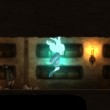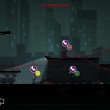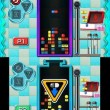Daylight Review
When Daylight's ridiculous final image appeared on my screen and the credits then rolled, I stared into my screen, mouth agape. What. Was. That?
My incredulity wasn't a result of how scary this first-person survival horror game is, but how poor it is, how it makes no effort to escape rusty cliches, and how nonsensical its writing is. Granted, I jumped at a few scares, but you can see only so many drawers fly out of bureaus, and so many toppled wooden chairs right themselves, before you know when and where the "surprises" will occur. Daylight is procedurally generated, but it's no less predictable than a typical linear adventure. In fact, a carefully crafted game might have provided more unique opportunities to create stupefying shocks. Daylight instead recycles the same basic fright props in different places, turning the initial scares into tepid shrugs.
You could think of Daylight as a combination of Slender: The Arrival and Outlast. The Slender comparison comes from how you must escape each area without coming too close to ghostly stalkers, in this case spirits in blood-soaked dresses, their eyes and mouths glowing with bright light. The Outlast connection is the setting, which focuses on a now-defunct asylum where terrible events once occurred. You grasp a cell phone that functions as a light source as well as a GPS, mapping out new areas as you enter them. As you move through each major region--the hospital, the sewers, the dark adjacent forest--you come across memos, personal diaries, and other written remnants of the past. Collect enough of these remnants, and you may proceed to the next stage of your journey. There's a story to piece together here, a story partially driven by the insidious disembodied voice that accompanies you. But after a single playthrough, it's a jumble of random notes and vague dialogue that point nowhere in particular.
It takes several playthroughs for the game's story to come into better focus, though the payoff is hardly worth the tedium of getting there. The hazy opening, which has player-character Sarah waking in the middle of an abandoned mental hospital, is almost quaint in how it embraces age-old horror cliches. It's tempting to presume that Daylight is aiming for B-movie appeal, but the writing lacks the overt melodrama, and the presentation is too prosaic, for the the game to earn a "so bad, it's good" recommendation. The rapid flutter you hear when a witch approaches is an effective touch, and the discordant string noodlings that puncture the silence when you set your eyes on her are chilling. But the audio often communicates no more true horror than a discount sounds-of-Halloween CD. Random creaks and screams don't contribute much to the atmosphere because there doesn't seem to be any evidence of a force that should create them. They're just eerie noises collected from the eerie-noise repository.
Some of the screams do have an obvious origin: Sarah herself often reacts to events as they occur. In fact, she often reacts to things that don't occur. "Oh God--I can't see anything," she complains, even though the phone and glow stick you carry do a fine job of illuminating her surroundings. "I know there's somebody here," she says, even when there's no obvious sign of another presence. She'll respond to silence with "What was that?" as if there's some paranormal phenomenon to analyze. Sarah displays no real character, so she comes across as though she's been possessed by an actress practicing her lines for an upcoming horror film.
Well, maybe Sarah is frightened by the silly writing, which piles on desultory truisms that have no apparent relevance to the muddled backstory. "Life is but a butterfly's dream," remarks your unseen guide, doing his best to make an arbitrary Chuang Tzu reference sound like a Deep Thought. Armchair philosopher Sarah opines out of the blue that you can't escape fate, proving that she's watched plenty of movies but adding nothing to the tale she's actually a part of. By the time a newspaper clipping raised the possibility that a construction project was occurring atop a Native American burial ground, I could only laugh. When it comes to appropriating horror ideas someone else used in superior ways, Daylight leaves no stone unturned.
The game's odd moments of inspiration provide proof that it didn't have to be this way. When a pursuer draws close, you can burn away her presence with a flare, and I reached for the flare button in a panic several times when a spirit closed in. The game's few puzzle elements were welcome, too, as was an inspired moment when a music box came to life and spun terrifyingly beautiful shadows across the walls and ceiling. Such beauty is uncommon in Daylight, a dated-looking horror game with the distinction of being the first game made with the Unreal 4 engine to be released. A cutting-edge engine deserved a more fitting introduction.

Daylight's most interesting facet is the way it allows you to connect the game to your Twitch.tv channel, where viewers can type keywords into the chat window and trigger in the game a few scares of their own. There's no official list of effective words: viewers simply try out commands and wait to see what happens. Hearing a panicked cry because someone in your channel typed "scream" is a curiosity, but only a curiosity. In fact, viewer-generated events simply confirm how disconnected the sound design and jump scares are from the setting and its themes. Who is it that's screaming, and what exactly is she afraid of? Daylight doesn't care. Screams are scary, and that's all that matters.
When it comes to appropriating horror ideas someone else used in superior ways, Daylight leaves no stone unturned.
Take Daylight's claims to procedural generation with a grain of salt; while the corridor mazes change somewhat from one playthrough to the next, layouts remain consistent enough that you can easily rush through them when making return visits. In fact, given the lukewarm nature of the game's scares, I took to rushing through the game at full speed on my second playthrough; you can sprint indefinitely, which isn't conducive to terror, but handy if you want to finish in 25 minutes or so. Daylight makes for an interesting experiment in audience participation, but no crowd of online viewers can make the poor writing any better or the themes any less hackneyed. In creating a game designed for return visits, Zombie Studios ironically forgot to make a game worth playing in the first place.









